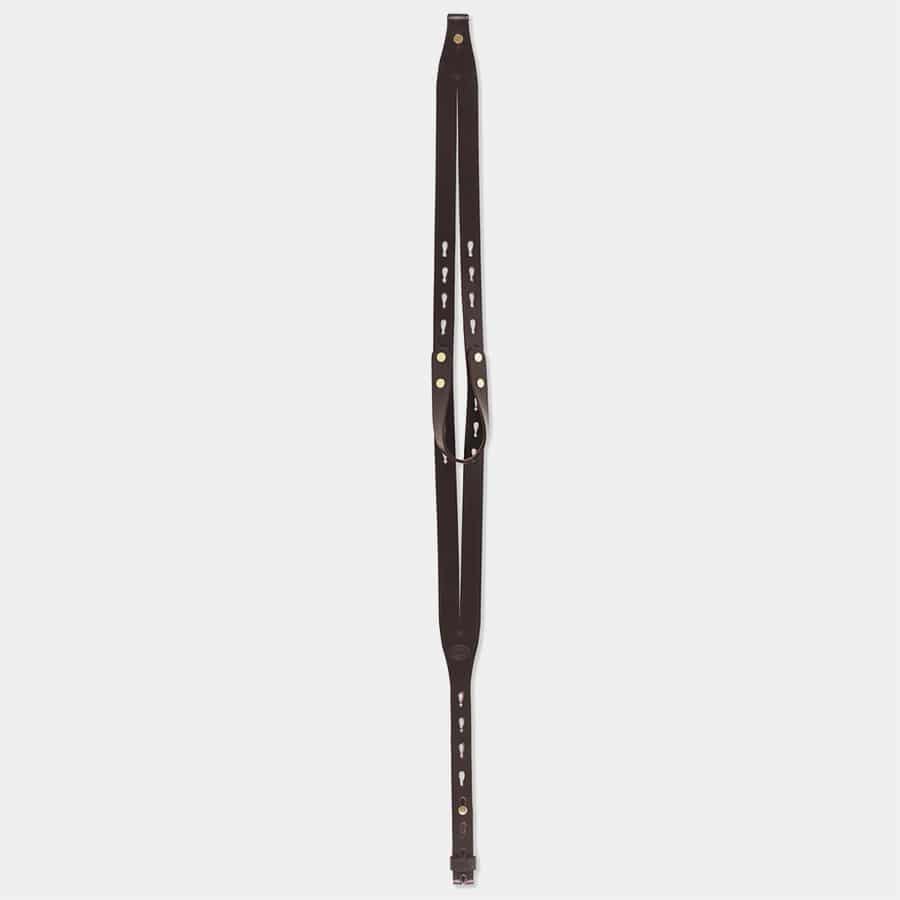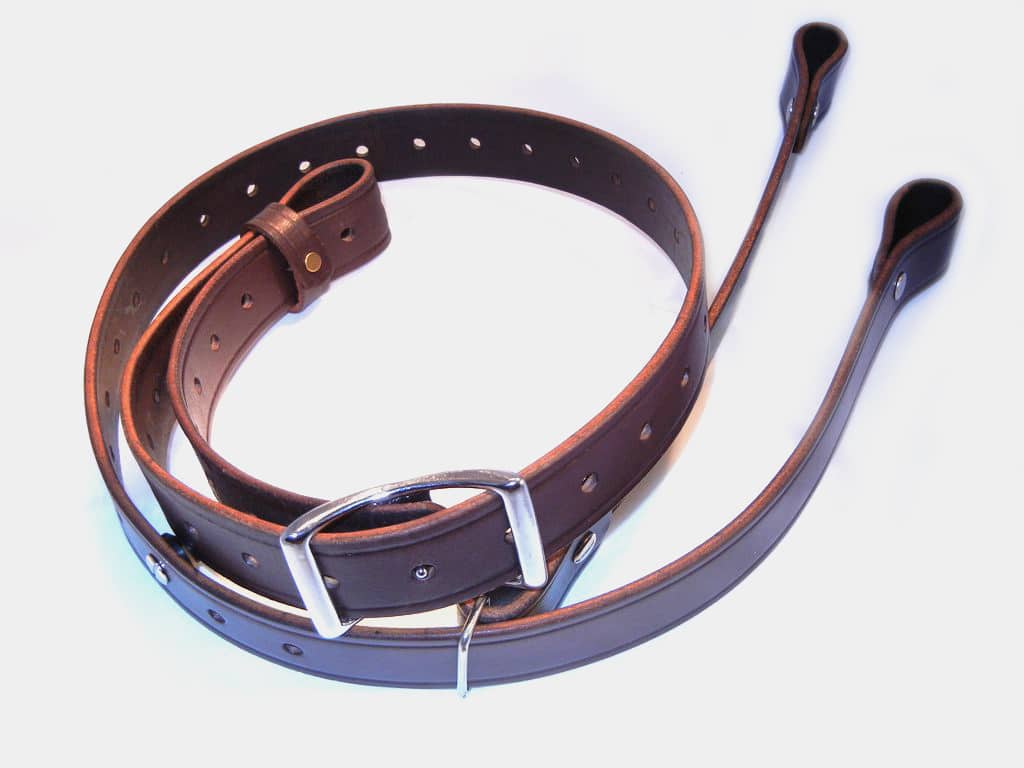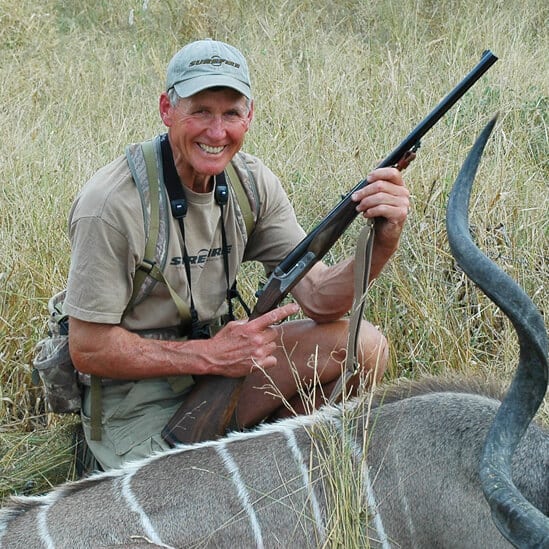What Is a Ching Sling?
August 27th, 2021
7 minute read
Rifle slings are exceptionally important and can contribute to both the accurate shooting and safe handling of a firearm. Over the years, there has been a wide range of sling types developed for all kinds of guns and shooting disciplines.
Today, I take a look at the Ching Sling. What is it and how does it work?
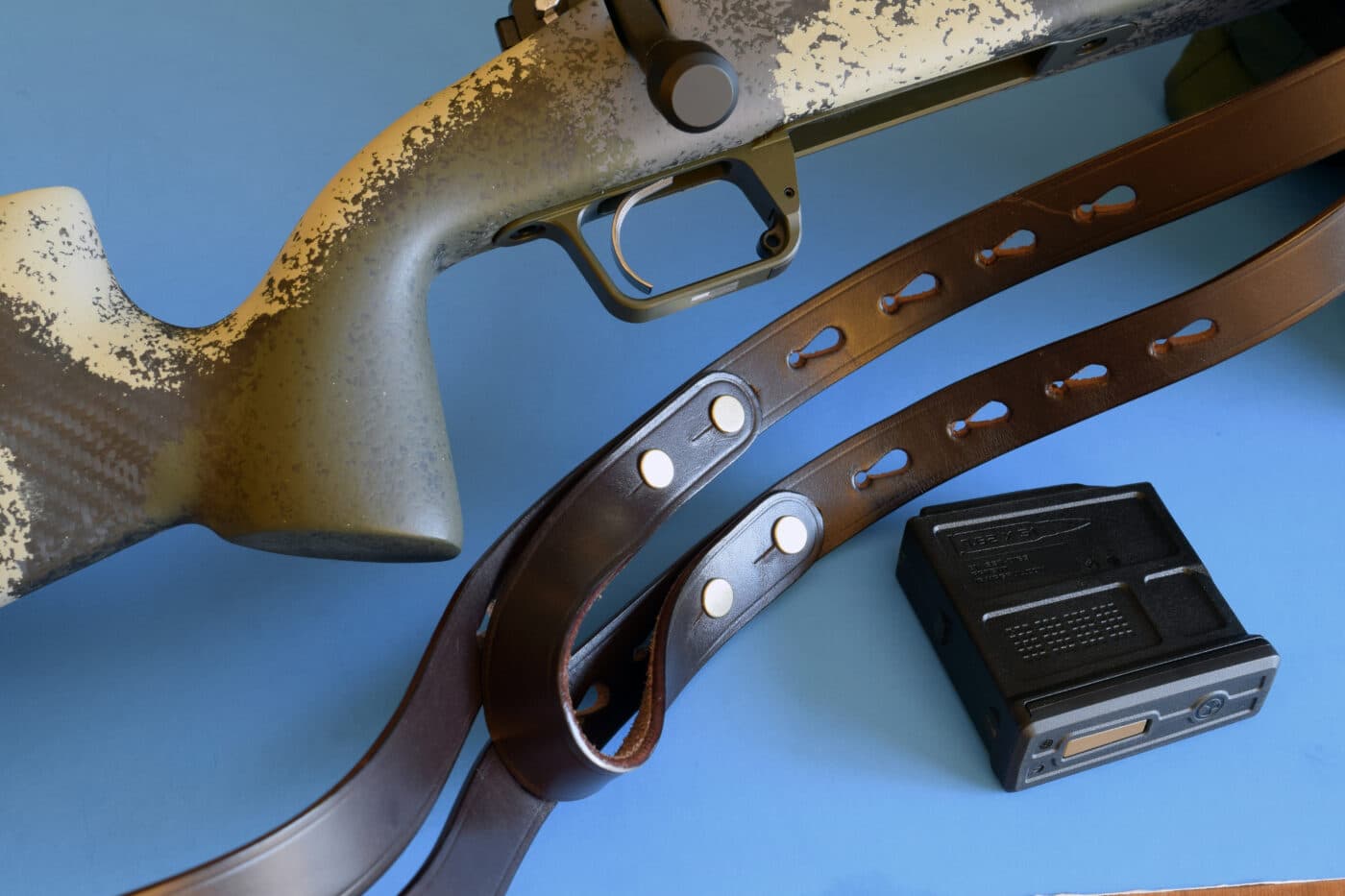
Why Use a Rifle Sling?
To get hits, you must:
- Point your rifle toward the target,
- Center the target in the sight and
- Control it while you press the trigger.
Without control, exhibition shooters from Annie Oakley to Tom Knapp would have had to find other work. Hunters from W.D.M. Bell to Jim Corbett would have met unfortunate ends. Olympians like Lones Wigger and Gary Anderson would have just watched the games on television.
But what is control?
Control is not holding a rifle motionless. That can’t be done, as long as you have a pulse. But you can limit motion with a position that offers lots of ground contact, brings your center of gravity as low as practical and relies mostly on bone support, not muscles that tire and twitch.
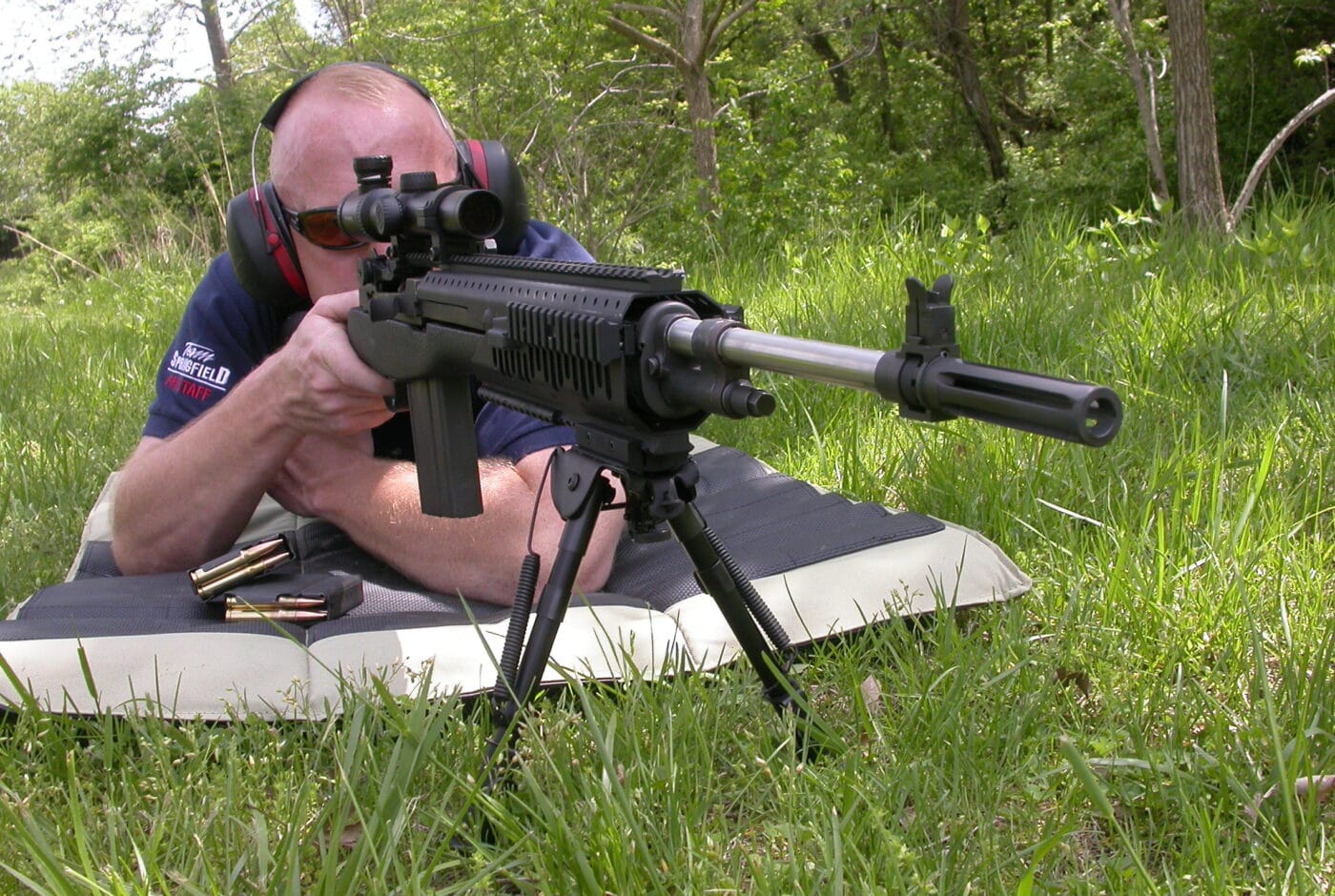
You can also get help from a rest: rock or backpack, shooting sticks or a bipod. Another option: a sling.
A sling tugs the rifle into your shoulder and nixes joint movement in your support arm. It transfers rifle weight from arm muscles to shoulder muscles that more easily bear it. A sling helps in prone, sitting and kneeling positions, all of which anchor your forward elbow. It is useless offhand (standing), because your elbow floats. Without the earth or the front of your knee to resist, sling tension collapses the elbow.
To me, every proper sling has a shooting loop adjustable independent of sling length. For nearly fifty years I’ve used Brownell’s Latigo Sling on hunting rifles. I’ve found none better. Unlike a two-piece military sling, there are no brass hooks to add weight, bang noisily against the stock or mar it. The Latigo’s only brass is a square ring at the base of the shooting loop and a button that secures the settings of the loop and overall length.
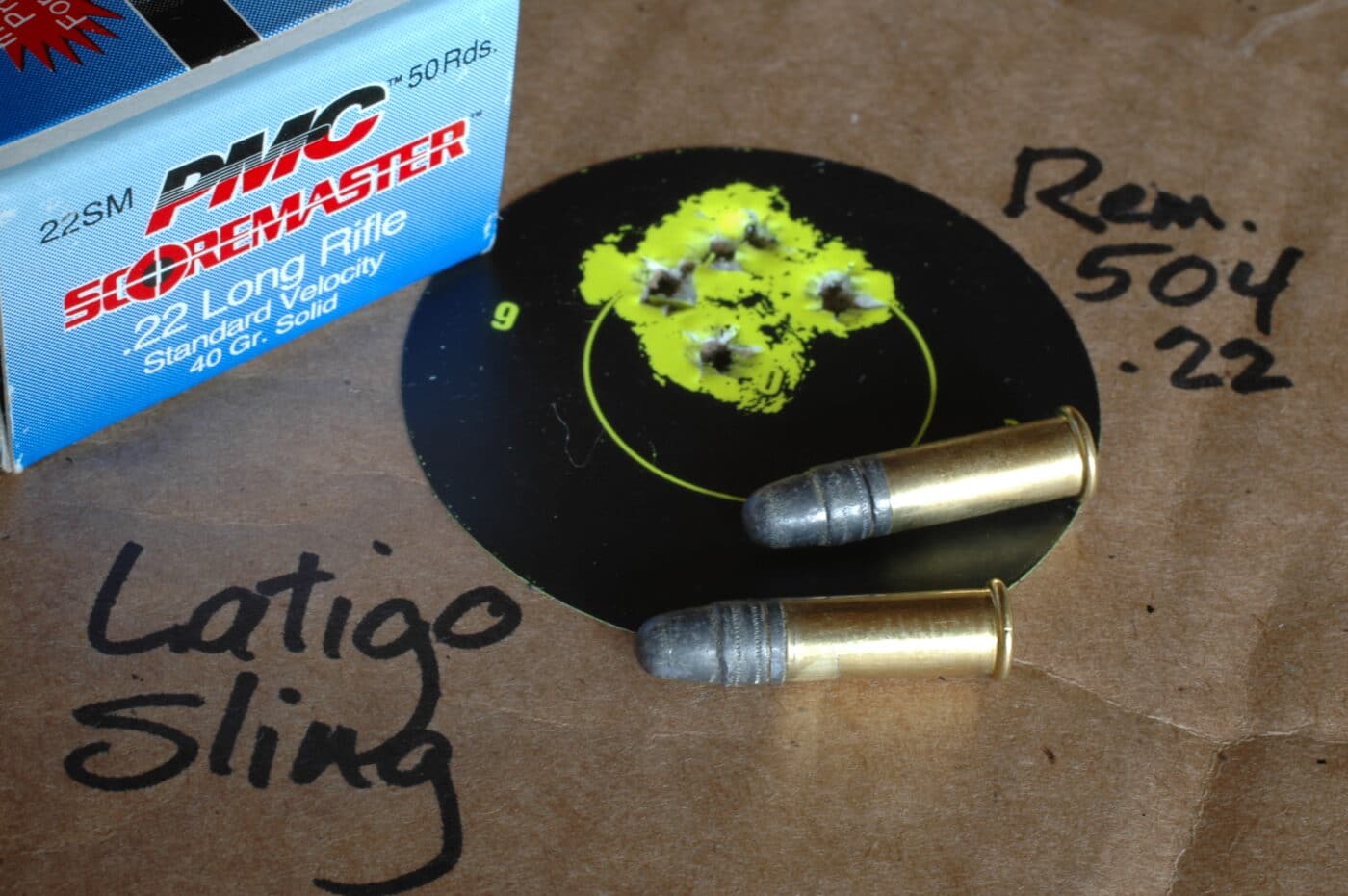
It steadies the rifle by coming taut from the front swivel to the back of my upper arm. From the upper arm to the rear swivel, it is slack. Elbow’s anchor (ground or knee) completes a static triangle that requires no muscle tension to maintain. The Latigo Sling can be quickly adjusted for carrying, though I do not adjust mine.
Any sling should be of leather. While nylon straps are strong and cheap, they will skid down your triceps — often just as the trigger breaks. On the carry, they also slip on your shoulder.
For the best use of a tactical sling made of nylon, check out our article on two-point slings for AR-15 rifles.
The Ching Sling Story
Oddly, few hunters use slings, instead, they often equip their rifles with carrying straps. Without a loop, these offer little if any help at the shot, because, you must muscle the strap to add tension. Then, instead of pulling the rifle straight into your shoulder, the strap also tugs the stock’s toe out of your shoulder and rotates it away from your body.
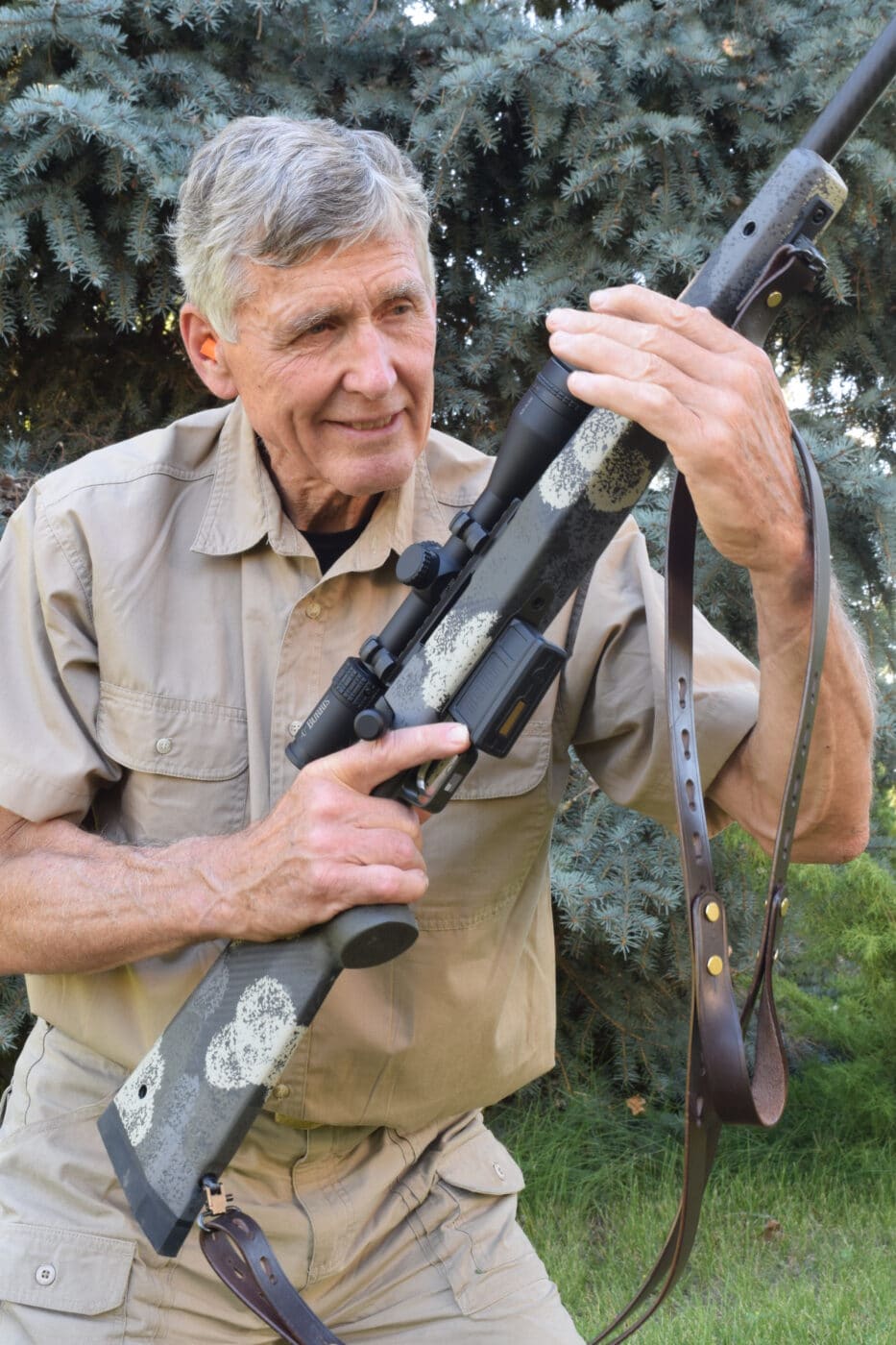
An alternative to the military sling, Whelen and Brownells Latigo Sling surfaced in the 1980s after Jeff Cooper adopted what he called the CW Sling, a nod to his friend Carlos Widmann. Quick to deploy, it got traction on Cooper’s new Scout Rifle.
Then in 1986, Eric Ching took a rifle class at what is now Gunsite Academy near Paulden, Arizona. At that time, it was the American Pistol Institute, run by Cooper. Ching came away with a better idea for a sling.
At his urging, leather-master Bruce Nelson fashioned a few. The sling required an additional swivel, forward of the guard; but it earned plaudits at Gunsite, where Cooper dubbed it the Ching Sling. Production then went to Galco International. A later re-design resulted in what Galco called its Safari Ching Sling. The forward section was split, eliminating the middle swivel.
How It Works
The Safari Ching Sling is a one-piece strap. A short, open U-shaped shooting loop, held by brass buttons, bridges the split section. The buttons put the loop at your chosen location along a series of slots. Buttons at sling’s ends hold it to swivels. Rear button adjustment determines overall length.
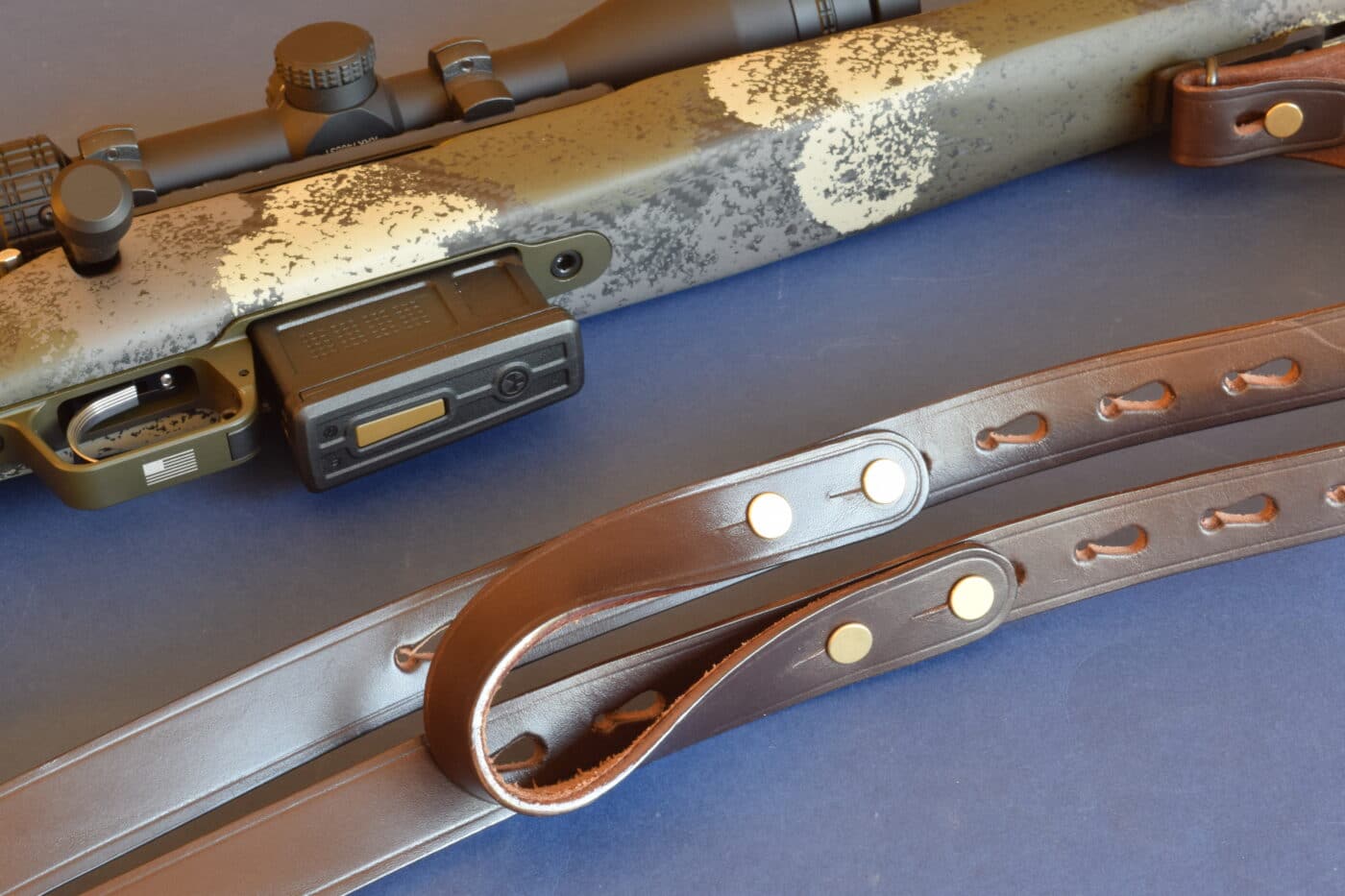
In use, you bring your left elbow through the split in the sling until the loop bears against your triceps. Then flip your hand around the outside of the sling to grasp the forend. (As with any sling, giving the loop a quarter-turn out before inserting your arm will ensure the leather lies flat against your wrist).
Galco has a reputation for high-quality belts and holsters. My Safari Ching Sling measured up to my high expectations.
A Different Approach to the Ching
Another Ching Sling, faithful to the original three-swivel design, comes from Andy’s Leather by way of Brownells. It too shows excellent workmanship. For the middle swivel, I could have drilled a hole and installed an Uncle Mike’s swivel stud just forward of the magazine well on a bolt rifle; but in the dark recesses of my cave, I spied a heavy-barreled .308 with a full-length forend rail. Adding a second swivel to the rail was easy.
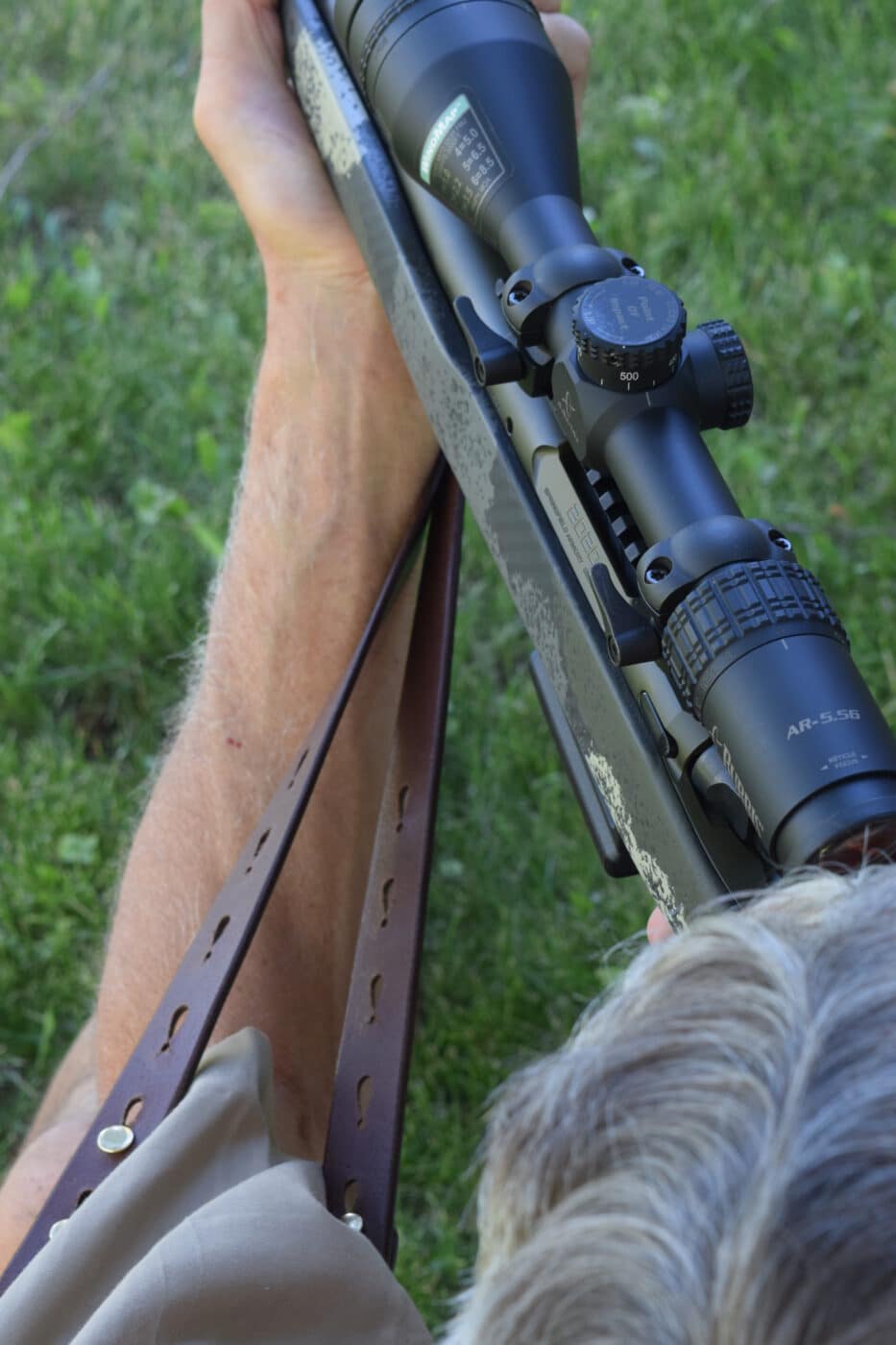
Either type of Ching Sling compels muzzle-down carry — a good idea and a simple trick if you’re toting any but a very long-barreled rifle. I find this carry more appealing than expected. It lets me thread brush more easily than butt-down carry.
Additionally, this carry shields the muzzle and action from rain and snow. The rifle and sling loop are quick to hand and the sling never gets in the way.
What’s Your Choice?
How does the Ching Sling compare with my go-to Brownells Latigo as a steadying device?
Not long ago, I used each to print groups with a .22 similar in weight and feel to a nimble deer rifle. It was scoped with the Leupold 4X I prefer for most hunting.
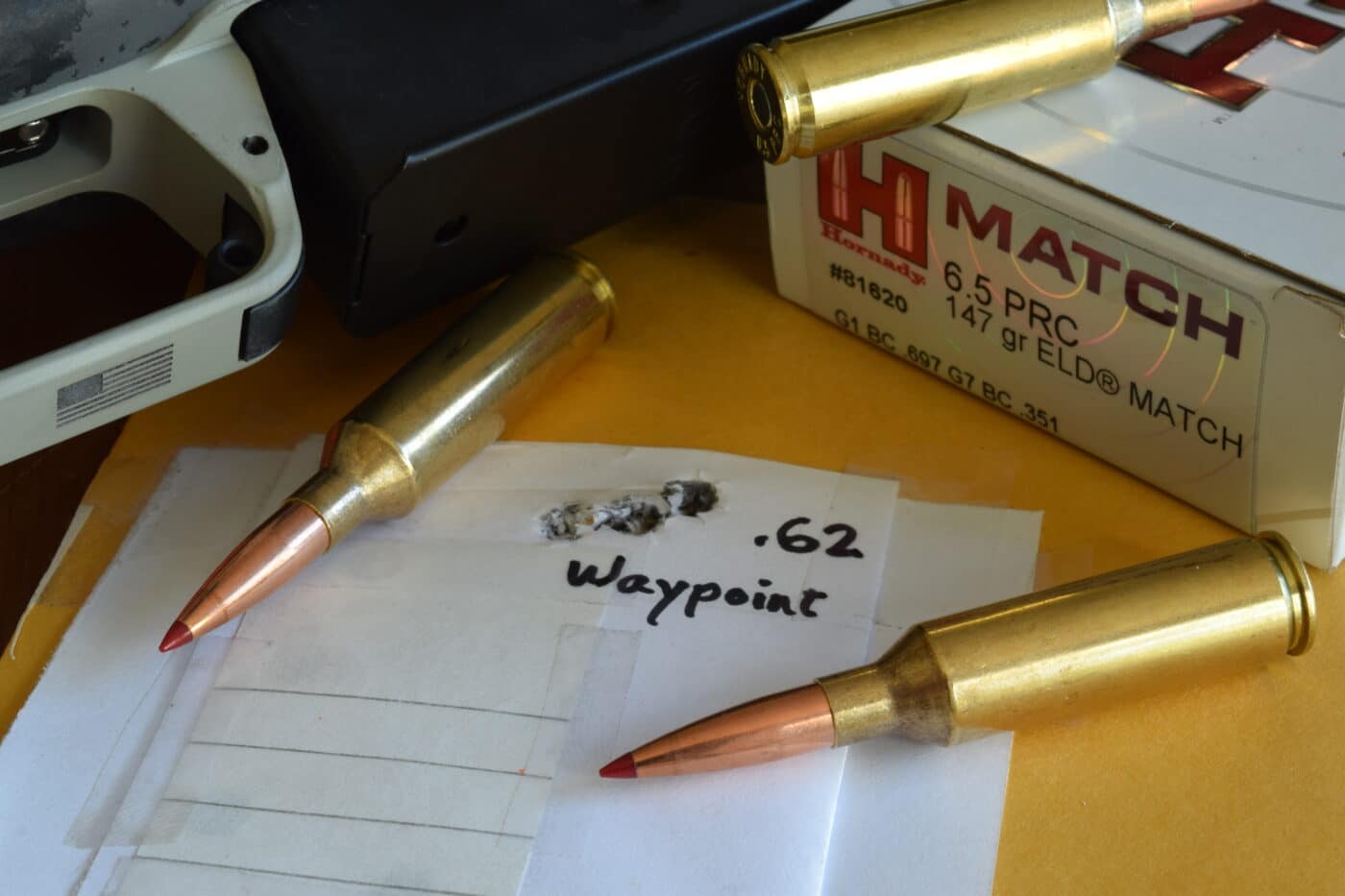
Having used a sling to check hunting-rifle zeros, I expected the impact shift from the .22’s bench zero. Under sling’s tug, prone and sitting groups routinely form at 7 o’clock. Kneeling, a 3- to 9-o’clock wobble increases lateral dispersion; but firm support from a steeply angled forward arm counters the sling’s downward pull.
I chose a .22 rifle because the cartridge is quiet and gentle. Even competition-grade ammunition costs little. Instead of drilling the rifle for a center swivel, I relied on the Galco version of the Ching Sling to stand in for the original design.
As prone is the steadiest position and I had fired thousands of rounds in prone matches, it seemed appropriate for this trial.
The protocol: fire four five-shot groups at 33 yards without an assist, then four each with Brownell’s Latigo Sling, Galco’s Safari Ching Sling and the Harris bipod. I’d allow myself one discarded shot per 20-round string.
Without any steadying device, the crosswire was lively. Despite my best efforts to control it, one of the groups opened to 1.6″, twice the spread of my best. Two others came in at 1.3. In minutes of angle, the average measure was 3.750.
Slings improved results dramatically. Both also trimmed variation in group size.
Given my long tenure with the Latigo, I expected to shoot best with it. But the Galco Safari Ching Sling edged it slightly, 2.175 MOA to the Latigo’s 2.325 average.
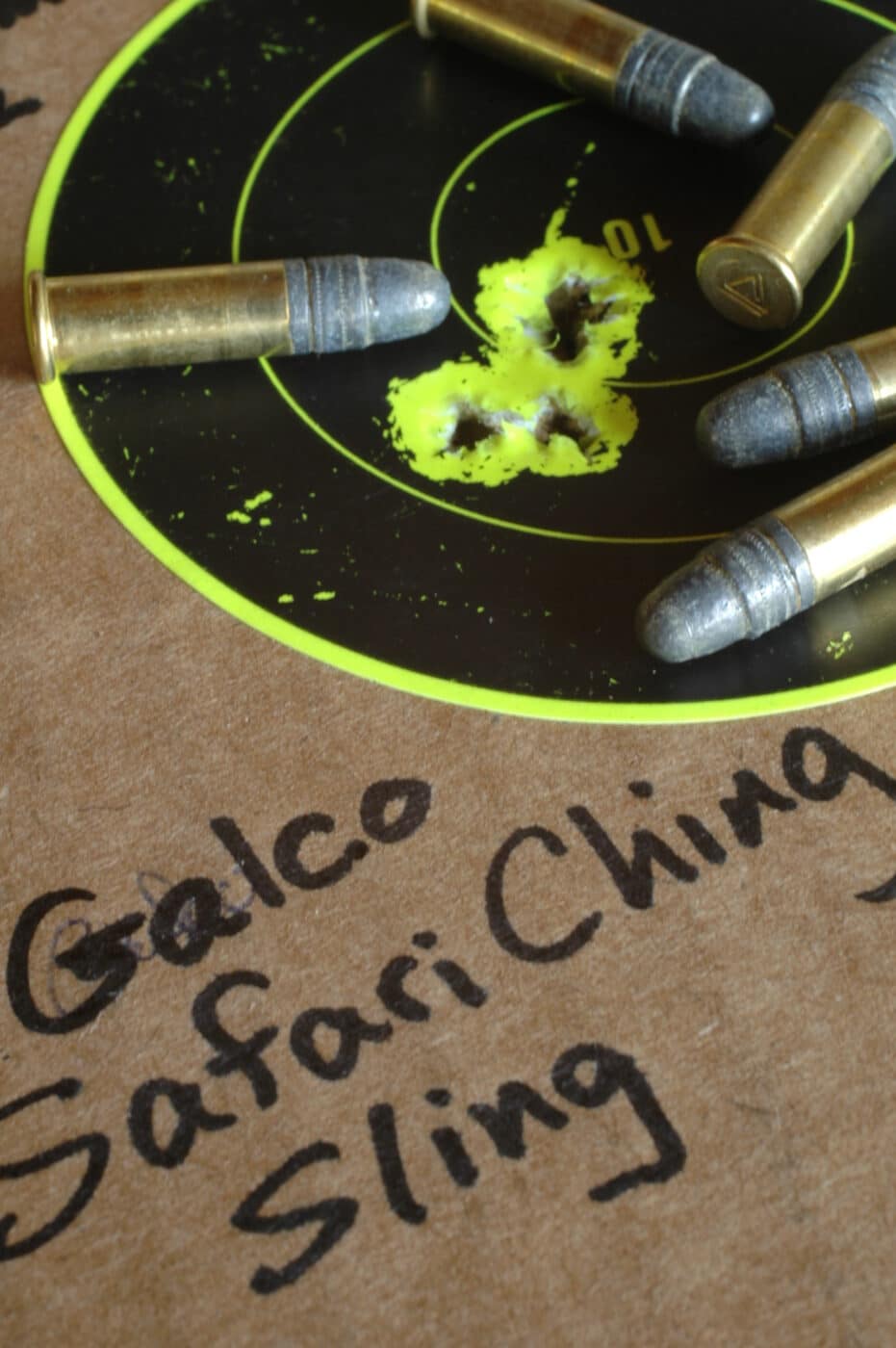
What surprised me was that the bipod yielded the same average as the Galco sling: 2.175 MOA. Greatest spreads of groups from the slings and bipod ranged from 0.8 to 1.0″ (2.4 to 3.0 MOA).
Shooting Test Results
Here are the results of my shooting:
| Group 1 | Group 2 | Group 3 | Group 4 | Average | MOA | |
| No Shooting Aid | 1.3″ | 1.6″ | 1.3″ | 0.8″ | 1.250″ | 3.750 |
| Brownells Latigo Sling | 0.9″ | 0.8″ | 0.9″ | 0.5″ | 0.775″ | 2.325 |
| Galco Safari Ching Sling | 0.8″ | 0.5″ | 0.8″ | 0.8″ | 0.725″ | 2.175 |
| Harris Bipod | 0.5″ | 1.0″ | 0.9″ | 0.5″ | 0.725″ | 2.175 |
As I hunt on foot and sometimes travel horseback, my hunting rifles don’t wear bipods. A good sling can help you to hold a shooting position for several minutes. It keeps the rifle on target without muscle strain. There’s no imperative to fire until all is just right.
Conclusion
Properly adjusted, the Galco Safari Ching and the Andy’s Leather Ching Sling will serve well. As with rifles, slings come into their own with practice. Make sure you don’t neglect yours.
Editor’s Note: Please be sure to check out The Armory Life Forum, where you can comment about our daily articles, as well as just talk guns and gear. Click the “Go To Forum Thread” link below to jump in!
Join the Discussion
Featured in this article
Continue Reading
Did you enjoy this article?

 51
51




